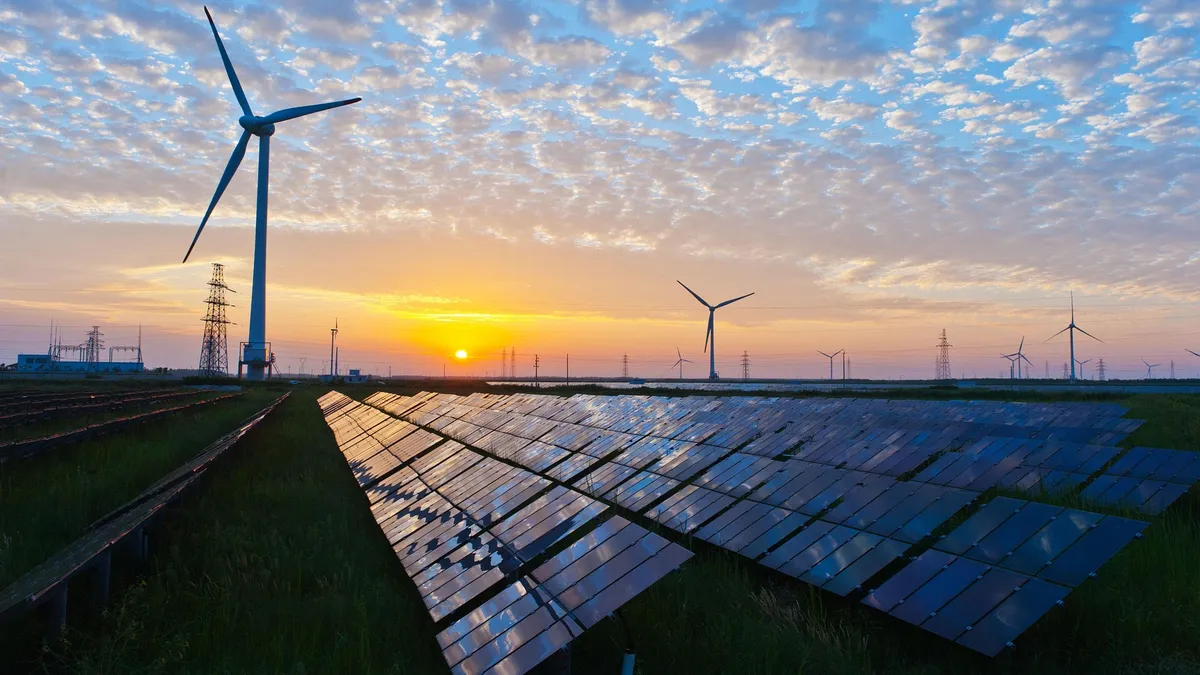Dive Brief:
-
The U.S. Department of Energy said Wednesday it has closed on a $504.4 million loan guarantee for a “green” hydrogen storage project in Utah that will initially be able to store up to 150 GWh worth of hydrogen, providing “seasonal” energy storage in the West.
-
The loan guarantee with ACES Delta, a joint venture between Mitsubishi Power Americas and Magnum Development, marks the first clean energy loan guarantee issued by DOE since 2011 and the first for a hydrogen project. “My mantra as Secretary of Energy is deploy, deploy, deploy,” Jennifer Granholm said Wednesday.
-
The Advanced Clean Energy Storage project could be a model for other hydrogen storage projects, according to Jigar Shah, director of DOE’s Loan Programs Office, or LPO. “This project, in our opinion, can be replicated, and that is what the [LPO] tries to do ... to get involved in deals that aren't just one-time deals,” Shah said Thursday in an interview.
Dive Insight:
In the near-term, the ACES project in Delta, Utah, will be used to supply hydrogen to an 840-MW natural gas-fired power plant that is being built to replace the 1,800-MW coal-fired Intermountain Power Project by 2025.
Initially, the new plant, owned by the Intermountain Power Agency, a consortium of utilities that includes the Los Angeles Department of Water and Power, will run on 30% hydrogen. The power plant is slated to run only on hydrogen by 2045, although Mitsubishi Power will try to speed up that timetable, according to a mid-February presentation on the power plant project.
Using 220 MW of electrolyzers, the ACES project aims to convert excess renewable energy to be delivered by the power plant owners into hydrogen, which will be stored in two salt caverns.
The project will be able to store months worth of solar and wind overproduction in the Western U.S. and help shift that electricity into seasons when there would otherwise be energy shortfalls, said Michael Ducker, senior vice president of Hydrogen Infrastructure for Mitsubishi Power Americas and president of Advanced Clean Energy Storage I, the company behind the project.
The Intermountain Power Project plant is in the middle of the growing Western Energy Imbalance Market, which has supported the sale of excess renewable energy that would have otherwise been curtailed. Electricity from the existing plant is delivered into California via a 488-mile, 500-kV line. Also, a 345-kV line runs 50 miles to near Mona, Utah, and a 230-kV segment extends about 145 miles into Nevada.
“This particular [power] plant is very well positioned, right within the western grid,” Shah said. “You've got a transmission line from an 1,800-MW coal plant all the way into LA. When you think about the way in which electricity can flow and where the existing electric utility infrastructure is, this plant is certainly well suited on those fronts.”
The project will be able to store 150 GWh worth of hydrogen, or about the same amount of battery storage DOE expects will be on the U.S. grid in 2030, according to Shah.
“This level of storage is consistent with the amount of seasonal storage the National Renewable Energy Laboratory research found is needed to decarbonize electric utilities in the western United States by 2035,” Shah said Wednesday.
The loan guarantee for the project reflects the LPO’s core mission “as it will help commercialize long-duration storage by enabling these technologies to cross the bridge to bankability,” Shah said.
The Biden administration is revitalizing the LPO, which last issued a loan guarantee in 2014 for the Vogtle nuclear project in Georgia.
“The goal of our efforts is not to just provide stimulus in the short term, but to create an institution that entrepreneurs and energy leaders can rely upon to help commercialize their technologies and build robust industries right here in the United States,” Shah said, noting the ACES project could anchor a future hydrogen hub.
“We look forward to what's next, including several upcoming closings and exciting projects like this,” Shah said.
The LPO was reviewing 77 loan applications totaling $78.8 billion at the end of May, according to DOE. The department has about $40 billion in loan capacity remaining, Granholm said.
About a third of the loan applications are “high quality” and can likely get through the loan office’s review process “pretty easily,” Shah said.
After more than a decade of inactivity by the LPO, “this really is the kind of proof that the market will appreciate that they are back in business,” Kenneth Hansen, a Norton Rose Fulbright partner, said Thursday, adding that pending loan requests “dramatically outstrip” DOE’s loan capacity.
“It'll be interesting to see either how they allocate the scarce resource or Congress responds by giving them authorization to handle that pipeline,” he said.
Meanwhile, Haddington Ventures, a private equity firm that owns Magnum Development, on Thursday announced a $650 million equity syndication program to help finance the ACES project. The investors in the syndication – Alberta Investment Management Corporation, GIC, Manulife Financial and Ontario Teachers’ Pension Plan Board – can increase their combined investment to $1.5 billion.














